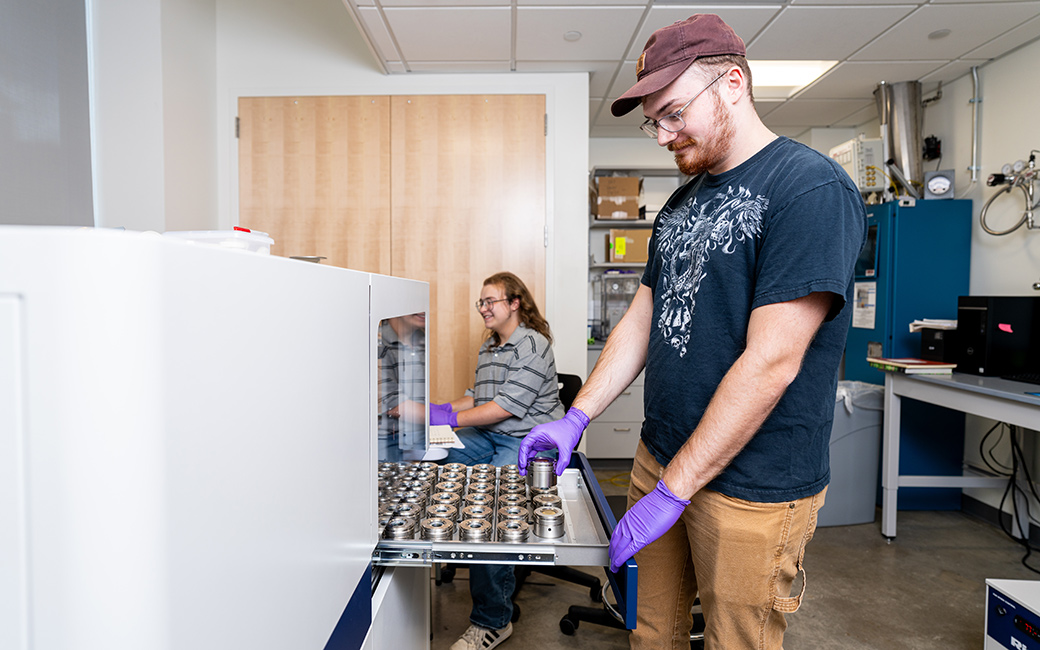About Us
UEBL contributes substantially to two goals in Towson’s 2020–2030 Strategic Plan (Innovate and Educate) and provides key facilities as Towson aims for R2 status.

History of the UEBL
Faculty members from Biological Sciences, Chemistry and Geosciences at Towson University (TU) formally initiated the Urban Environmental Biogeochemistry Laboratory (UEBL) in 2005 with a focus on the functional interrelationships between the chemical, physical, geological and biological processes that control the sources, transport, cycling and fate of elements and compounds in urban/suburban systems. In 2007, a full-time laboratory manager was hired to run UEBL.
Instrumentation that formed the core of UEBL in the early days was purchased via two NSF MRI grants as well as numerous research grants from diverse sources. The first MRI in 2001 provided funds to establish an inductively-coupled plasma mass spectrometer (ICP-MS) lab. The second MRI provided for the X-ray fluorescence spectrometer and carbon/nitrogen analyzer. Faculty associated with UEBL have worked with federal, state and local agencies to provide critical scientific research capable of informing environmental policy and best management practices related to the rapid urbanization of the Chesapeake Bay Watershed.
In 2010, the UEBL was awarded a $1.4 million NSF ARI grant to renovate space on the first floor of Smith Hall. Supplemented by funds from TU, these renovations were completed and the space opened for use in October 2012.
In 2022–23, UEBL moved to the new Science Complex. Several of the original instruments were replaced. Additionally, the purchase of a couple of new instruments expanded the analytical capabilities.